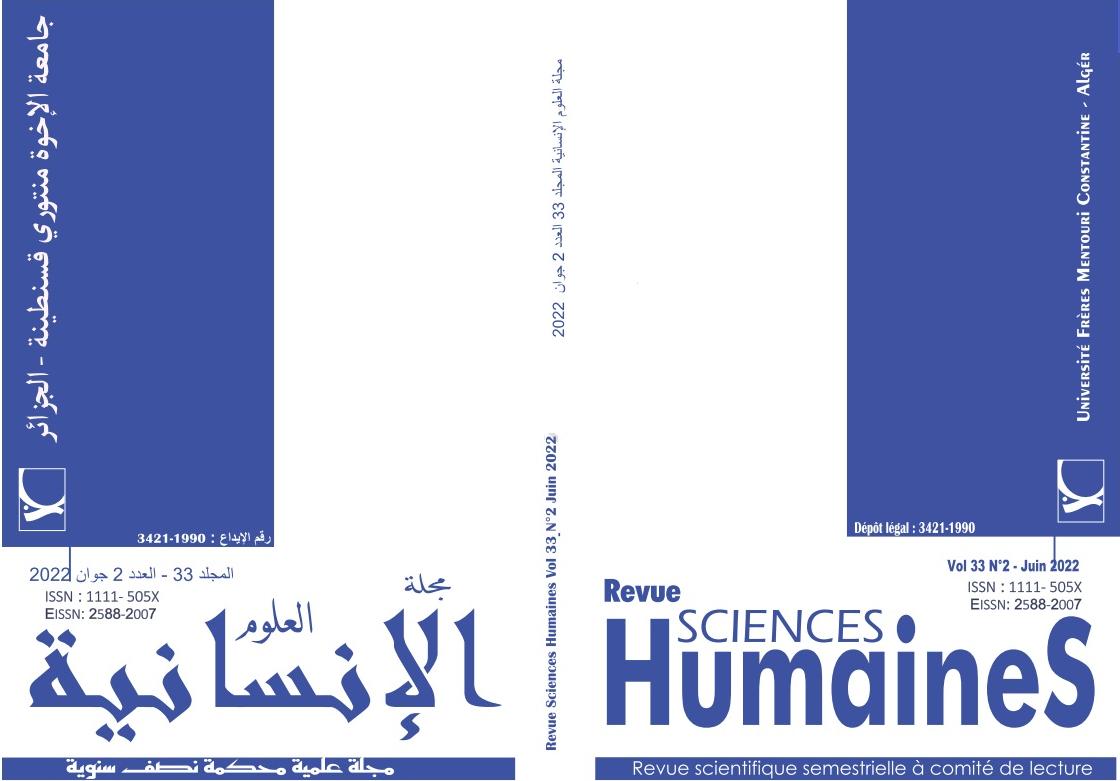كنموذج TEACCH :التكفل بأطفال طيف التوحد باستعمال العلاج التربوي للأطفال المصابين بالتوحد وصعوبات التواصل
تحليل لدراسات سابقة
Mots-clés :
تربية, علاج, برنامج TEACCH, اضطراب طيف التوحد, الإعاقة التواصليةRésumé
Le TEACCH est parmi les programmes les plus utilisés dans le monde, l'objectif principal de cet article est d'accroître les connaissances sur l'importance du programme TEACCH, et de révéler ses avantages et les points sur lesquels il se concentre pour améliorer certains des comportements des enfants avec TSA et ceux qui ont des troubles de la communication, la question était partie de l'importance de TEACCH et de son rôle dans le développement des compétences des personnes avec autisme et celles liées aux troubles de la communication, l'approche descriptive s'est appuyée, à travers une revue de plusieurs études, sur un échantillon d'enfants atteints de TSA, les résultats ont prouvé que l'approche TEACCH a la capacité de fournir une éducation appropriée aux enfants atteints de TSA, en développant les compétences fonctionnelles, le fonctionnement communicatif, la motricité, la coordination visuelle et d'autres compétences importantes, comme il s'avère que ce programme se caractérise également par sa flexibilité.
Téléchargements
Références
Amaral, D., Geschwind, D., & Dawson, G. (Eds.). (2011). Autism Spectrum Disorders (1 edition, 1 edition) [Computer software]. Oxford University Press.
APA, A. P. (2015). APA Dictionary of Psychology. American Psychological Association.
Boyd, B. A., Hume, K., McBee, M. T., Alessandri, M., Gutierrez, A., Johnson, L., Sperry, L., & Odom, S. L. (2014). Comparative Efficacy of LEAP, TEACCH and Non-Model-Specific Special Education Programs for Preschoolers with Autism Spectrum Disorders. Journal of Autism and Developmental Disorders, 44(2), 366–380. https://doi.org/10.1007/s10803-013-1877-9
D’Elia, L., Valeri, G., Sonnino, F., Fontana, I., Mammone, A., & Vicari, S. (2014). A Longitudinal Study of the Teacch Program in Different Settings: The Potential Benefits of Low Intensity Intervention in Preschool Children with Autism Spectrum Disorder. Journal of Autism and Developmental Disorders, 44(3), 615–626. https://doi.org/10.1007/s10803-013-1911-y
Frith, U. (2008). Autism: A Very Short Introduction (1st edition, 1st edition) [Computer software]. Oxford University Press.
Panerai, S., Ferrante, L., & Zingale, M. (2002). Benefits of the Treatment and Education of Autistic and Communication Handicapped Children (TEACCH) programme as compared with a non-specific approach. Journal of Intellectual Disability Research: JIDR, 46(Pt 4), 318–327. https://doi.org/10.1046/j.1365-2788.2002.00388.x
Rogé, B. (2008). Autisme, comprendre et agir - 2e éd.: Santé, éducation, insertion. Dunod.
Rossi, G. (2007). Implementing TEACCH educational intervention principles and communication strategies for persons with autism. Revista de Logopedia, Foniatría y Audiología, 27(4), 173–185. https://doi.org/10.1016/S0214-4603(07)70086-4
Siu, A. M. H., Lin, Z., & Chung, J. (2019). An evaluation of the TEACCH approach for teaching functional skills to adults with autism spectrum disorders and intellectual disabilities. Research in Developmental Disabilities, 90, 14–21. https://doi.org/10.1016/j.ridd.2019.04.006
Autism Rates by Countries Population. (2019), retrieved from http://worldpopulationreview.com/countries/autism-rates-by-country/
Téléchargements
Publié
Numéro
Rubrique
Licence

Cette œuvre est sous licence Creative Commons Attribution - Pas d'Utilisation Commerciale - Pas de Modification 4.0 International.












